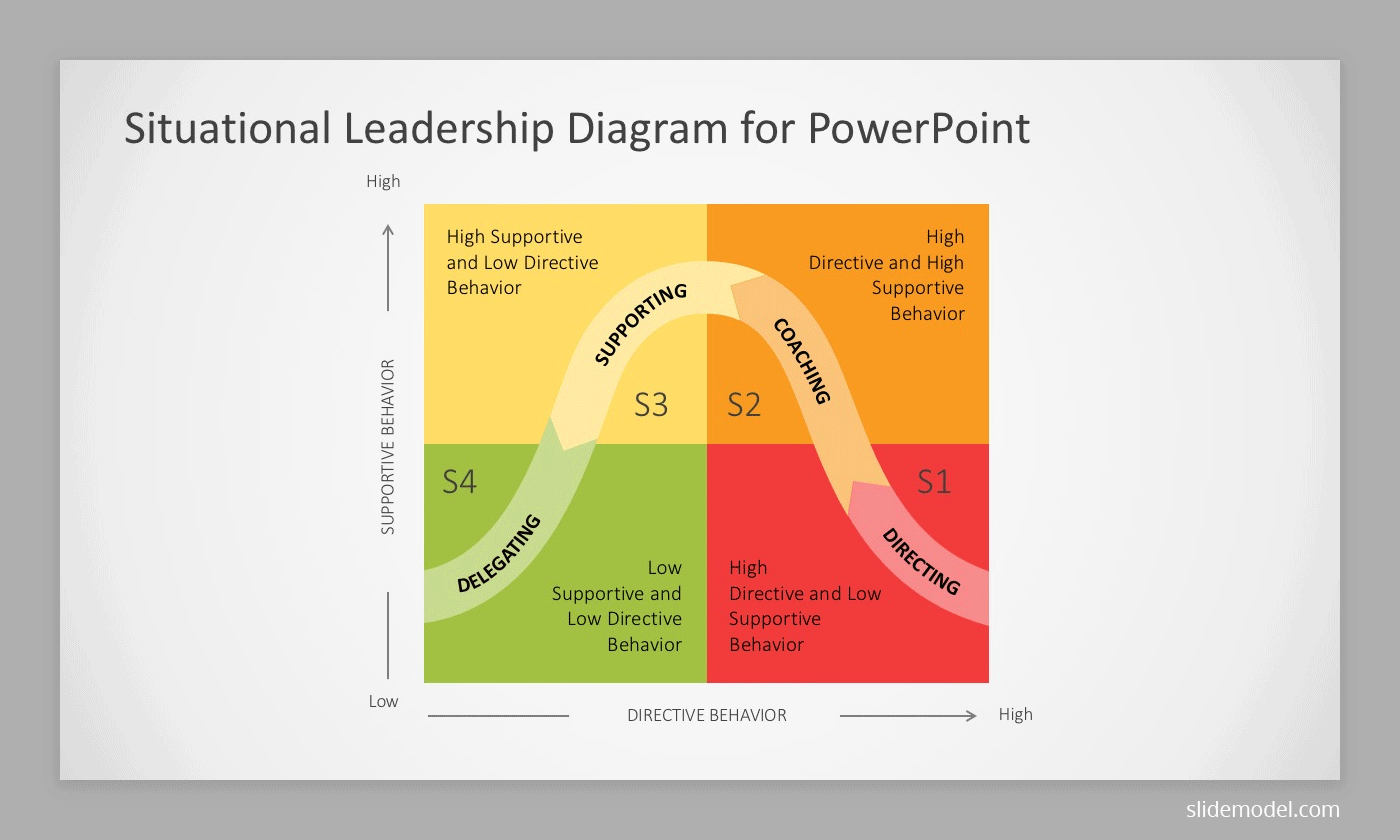
Being a good corporate leader is both art and science. On one hand, you need to experiment and often use your “gut feeling” to decide on how you should behave in one situation or another. On the other hand, without a solid leadership methodology, all your efforts may result in minimal impact.
So let’s take a closer look at the different types of leadership styles, formalized by social scientists, along with explanations on when each of them works best at the workplace.
What is Leadership Style?
A simple definition of leadership style is this one:
A leadership style is a combination of a leader’s methodologies and character attributes that they use to motivate and guide others.
A great leader can create meaningful change, and inspire the people who look to them for guidance. In the workplace, they can encourage teams to become more productive and do their best work.
What Are The Most Commonly Accepted Leadership Styles?
Leadership is a complex phenomenon. Over the last century, many researchers studied it from different angles, attempting to formalize the conceptual types of leadership styles.
In particular, Kurt Lewin has identified three types of leadership: autocratic, democratic, and laissez-faire. Then, in their book ‘Primal Leadership’, Daniel Goleman, Richard Boyatzis, and Annie McKee defined six types of emotional leadership. Lewin’s leadership styles and the emotional leadership types are worth discussing as a group because of the overlap between the theories. So let’s dive into this first!
Lewin’s Three Leadership Styles Explained
Lewin’s theory of leadership types is based on his early social experiment, conducted with three groups of school children meeting every week for a mask-making class. Lewin asked his graduate student, Ronald Lippitt, to use a different management style with every group, while he observed how the children responded to each approach. Below is a quick summary of his findings.
Autocratic Leadership

Leaders who take this approach tend to:
- give their followers little-to-no autonomy.
- Provide everyone with detailed instructions on how things need to be done (or micromanage).
Here, the roles are very rigid. The leader is in command, and the team is expected to obey. Autocratic leaders do not seek input from their teams very often. In Lewin’s study, the children were most productive but did not achieve the highest quality results.
Autocratic leadership is easily abused, often uses negative reinforcement techniques, and should mostly be avoided. Some exceptions will be addressed later in the article.
Democratic Leadership

Democratic leaders:
- Get their teams involved in the decision-making process.
- Encourage participation, value buy-in, and maintain high stakeholder engagement.
- Often give team members authority via delegation.
The consensus is that democratic leadership is among the most effective management styles.
When Should You Use This Leadership Style?
Also called participatory leadership, this style works best when you are working with an expert team with clearly defined roles and responsibilities. Everyone knows what to do and requires minimal supervision.
Some examples of leadership in this category are George Washington, Dwight D. Eisenhower and Jimmy Carter.
In the business setting, it’s often the best leadership style for:
- Software development teams
- Startups and IT companies
- R&D labs
- Universities and other educational institutions.
How to Promote This Leadership Style at the Workplace
- Appoint project leaders based on skills and experience.
- Hold meetings to get feedback from team members before making decisions.
- Focus on outcomes only, and allowing team members to develop their own methodologies.
- Provide team members with explanations of the leadership decisions they make.
Laissez-Faire Leadership

Laissez-faire or delegative leaders tend to:
- Prefer mass-delegation and “outsource” most decision-making to their underlings.
- Deliberately abstain from giving direct orders and giving the individual more freedom of choice.
- However, they do get more proactive when it comes to far-reaching decision making and strategic planning.
When Should You Use This Leadership Style?
Laissez-faire team management paradigm makes the most sense in creative industries, where self-rule style can drive more creative thinking.
Some examples include:
- Marketing teams and advertising agencies
- Product design teams
- VC companies
- R&D departments
- Early stage-startups
How to Promote This Leadership Style at the Workplace
- Learn to hire effectively: choose self-motivated candidates.
- Invest in improving the individual leadership qualities of each team member, so that they can take more ownership of their work.
- Allow your team to solve problems and tackle challenges on their own. But step in when you are dealing with a major crisis.
Emotional Leadership Styles
Daniel Goleman and his fellow researchers completed a 3-year study with over 3,000 participating mid-level managers. Their goal was to uncover how different types of managers lead at the workplace and how their behaviors impact the business bottom lines.
Apart from the formalized 6 emotional leadership styles, their other major finding was that one manager’s leadership style can drive as much as 30% of profitability for a company. Another case in point to why you should pay more attention to interpersonal relationships within your organization!
Democratic Leadership
Goleman’s findings largely match Lewin’s definition of a democratic leader. Such managers emphasize collaboration, seek and value feedback from their team members. They listen rather than dictate. This is a good style to adopt to get your team on board and to build consensus.
Coercive Leadership
This one is a very close match to Lewin’s autocratic style of leadership. It focuses on direct orders, control of methodologies, and often uses negative reinforcement. This style of leadership can be abused. It can also make employees feel denigrated, and undervalued.
When Should You Resort to This Leadership Style?
Coercive leadership can serve a good purpose as a very short-term solution during crises, or when employee behavior is problematic. In other cases, you should give preference to different management styles.
Authoritative (Visionary) Leader

Not to be confused with autocratic or authoritarian leaders, such leaders do not dictate the pace of work. What they do instead is explain the general vision for the team and let them figure out the best way to meet that set goal.
When Should You Use This Leadership Style?
Implement this method when your team gets a bit side-tracked and perhaps disengaged. If we take the implementation of an innovation strategy as an example, your goal as a visionary leader is to explain the road ahead and inspire people to take action. You can set milestones, but do not resort to giving rigid instructions on how these should be reached.
Pacesetting Leadership

Pacesetting leaders set lofty goals and have high standards of performance. Such managers often tend to push their followers to jump above their heads and over-deliver. Thus, such workplace leadership may not be met positively by all team members.
However, the pacesetting leader will often demonstrate a willingness to work just as hard as their team members by jumping in and working on any task that needs an extra set of hands.
The negatives are that this is an intensive style that can lead to burnout. Staff may end up feeling frustrated, and turnover can increase.
When Should You Use This Leadership Style?
Use this style when you need to get an already motivated and skilled team to complete a complex task quickly. It’s a solid management style for working on high-pressure projects with short delivery time-frame e.g. entering a new market before the competitor or orchestrating a new product launch.
Coaching Leadership

The goal of a good coach leader is to align the employee’s personal goals with the company’s. Such managers are highly empathetic and try to find an individual “success recipe” for everyone under their command. They establish ongoing rapport and trust with the team and focus on helping team members develop skills that will help them succeed in the future.
When Should You Use This Leadership Style?
Use this approach with team members who are motivated and relatively skilled, but lack direction. Individual mentorship relationships may be hard to scale, though, so focus on people who need ongoing training to become more successful in the future.
Affiliative Leadership

Affiliative leaders work on creating healthy relationships among team members. They heavily invest in building good working relationships within the group, are proactive with conflict resolution and encourage an inclusive environment. This style requires you to have high emotional intelligence to understand the emotional needs of others.
When Should You Use This Leadership Style?
Opt for this style when you’ve been assigned a newly assembled team or one that has recently dealt with a breach of trust (e.g. due to past managerial misconduct or some external event).
Additional Leadership Styles in Management to Consider: Transformational Leadership
As the name implies, this leadership style works best when you want to create significant change. Transformational leaders:
- Set the moral standards in the company by example and encourage others to follow them.
- Promote a collaborative work environment with clear priorities, shared values and performance standards.
- Heavily invest in company culture and encourage the teams to shift from self-centered goals to the idea of working for the common good.
- Coach and mentor when needed. But also give the team room for making individual decisions and taking ownership.
When Should You Use This Leadership Style?
Use transformational leadership when the goal is larger than simply completing a project or meeting a deadline. It is intended to inspire change within a group.
Situational Leadership
Still not sure what leadership style is right for you? Well, there’s no need to focus on just one. As mentioned already, different styles work best with different teams and under varying circumstances.
Beyond that, you can always opt for a situational leadership model, developed by Kenneth Blanchard and Paul Hersey. In short, it postulates that you should adapt and change your leadership style according to the needs of the people under you.

Telling
When the team member’s ability, maturity, and confidence is low, the ‘Telling’ leadership style can be most effective. This involves providing team members with instructions to carry out. It is most effective with teams lacking both knowledge and motivation.
Selling
Here, leaders gain cooperation and confidence by explaining the motivations behind their decisions. This leadership methodology can be used when there is a lack of established trust (new management), or when motivation is more desirable than skill.
Participating
This style involves allowing team members to take a more active role in the decision-making process. This method is often used by leaders who wish to establish positive relationships with team members. This works well with competent teams that can be trusted to make the majority of project decisions themselves.
Delegating
This is a hands-off approach to leadership. Here, group members are empowered to make most of the decisions. This approach works when there is a high level of maturity, confidence, and competence among team members.
Final Thoughts
The best leaders don’t rigidly adopt a single style of leadership. Instead, they use their skills to assess the needs of each project and the capabilities of the people on their teams. Then, they adapt their approach using the best practices defined for each leadership methodology. Alternatively, check our article about leadership SMART Goals Examples and our collection of leadership PowerPoint templates.



I noticed some missing text. The first sentence under Affiliative Leadership and is missing a word or words. The first bullet under Transformational Leadership is incomplete or the last “the” should be deleted. Can you post the corrected text or let me know what the corrections should be?
Thanks.
Hi Randy,
Thank you for your feedback. We had fixed the content.
Have a nice day,
GV.